Tomato Talk
A Full Season of Tomato-Growing Information
Tomato support: staking, trellising, caging
In July, tomatoes seem to take on a whole new attitude. At the beginning of the season they are polite. They grow at a steady but manageable pace. But around the fourth of July, they get aggressive. They grow quickly and we soon realize they need some support.
Tomato plants sprawl by nature, and left unsupported, will trail on the ground. If left to sprawl, the plants are more disease-prone and fruit quality can suffer. A good trellising system lifts the plants off the ground, and allows for air circulation. There are many different trellising approaches and systems. Whatever support system you use, make sure it’s strong enough to withstand storms and wind—avoid having to re-trellis a tomato!
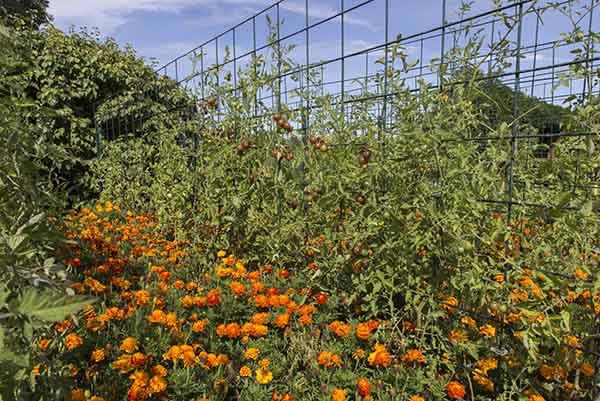
Trellised tomatoes benefit from support throughout the season, but especially once fruit begins to ripen.
Benefits of Trellising
- It improves yield: Most tomato plants will grow heathier and produce a larger yield if they have supports to grow on. Keeping fruit off the ground prevents the fruit from becoming food for slugs, insects, or small animals.
- It maximizes space: Vertical growing takes much less space than horizontal, so you can plant tomatoes closer together without crowding. Remember, indeterminate tomatoes are vines, so unsupported plants will sprawl as far as you let them.
- It prevents disease: Trellising allows more air circulation around the foliage, which keeps it drier and less vulnerable to fungal diseases. Keeping it off the ground also reduces exposure to soil-borne pathogens.
What's the best support for tomatoes? Pretty much anything.
Stakes
There are a variety of commercial stakes, but you can also make your own from reclaimed materials such as wood or rebar. Stakes should be at least 6 feet tall, but for indeterminate tomatoes you might want to consider stakes as tall as 12 to 14 feet. Jennifer Schwarz Ballard, the Chicago Botanic Garden's vice president of education and community programs notes, "In my garden, which doesn’t have as much sun as is ideal, my tomatoes need to stretch to reach the sun, and have grown easily to 14 feet." As your plants grow, tie the stems loosely to the stakes with twine, twist ties, or tomato clips. Attach a twist tie or clip every 6 to 12 inches or so when using stakes. This can be a weekly task to keep up with tomato growth and fruit set (supporting the weight of the fruit). If you choose to have multiple fruit-bearing stems, you can use a stake for each stem.
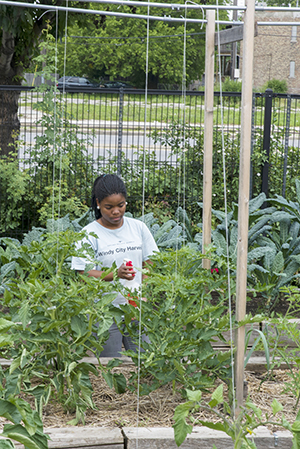
Tomato stakes and string work well for indeterminate tomatoes, which continue climbing all season long.
Cages
Cylindrical or square wire cages keep tomatoes upright without the need for tying the stems—the cages themselves support the tomato foliage and fruit. Caging can be good option if you don’t prune your tomato plants. Many commercially available cages are on the smaller side and work well for determinate tomatoes since they are more compact and stop growing upward at around 3 to 4 feet in height (depending on the variety). The more heavy-duty cages can also work for indeterminate tomato plants. It’s worthwhile investing in sturdy cages for indeterminate tomatoes; square cages collapse for easier storage.
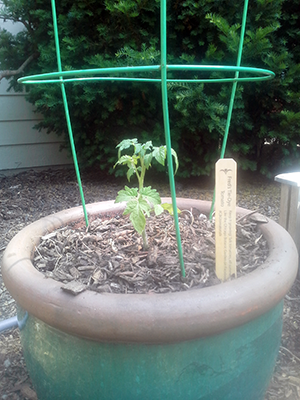
Our tiny Fred's Tie Dye seedling will eventually fill this standard round tomato cage.
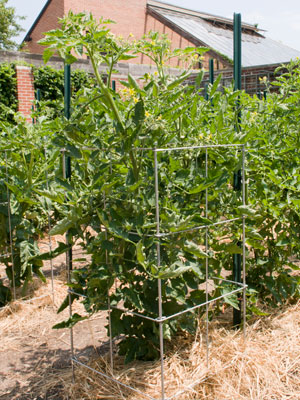
Square cages offer strong support, and are collapsible for easier storage at the end of the season.
Trellises
There are many, many ways to set up trellises, but the two essential components are sturdy side supports and wire, string, or another element to tie tomatoes to as they grow. Many also have a bar across the top to provide additional support and an anchor for the netting, string, or wire used to support the growing vines. The photo below shows a two different ways of creating trellises.
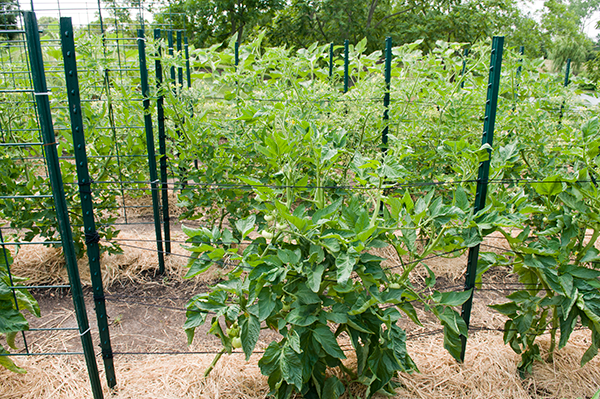
In this hybrid of a trellis and stake option (both shown above), the wires holding the tomatoes run horizontally, not vertically. Notice the standard trellises adjoining these supports—we are also always comparing and trying out new tomato supports.

